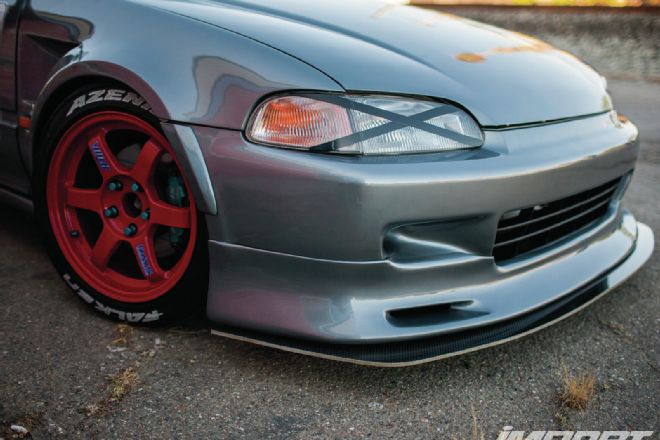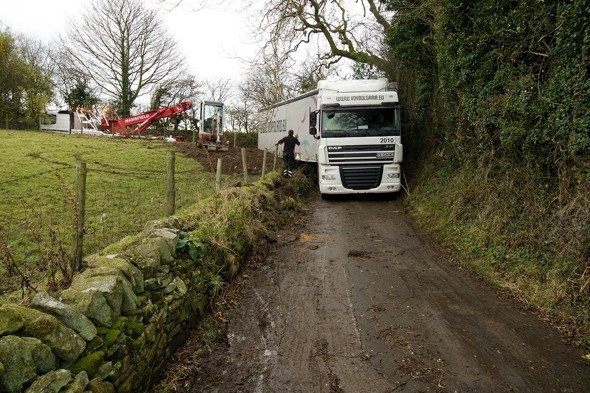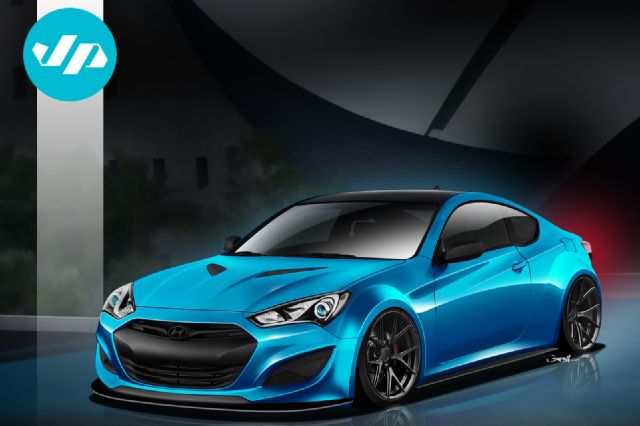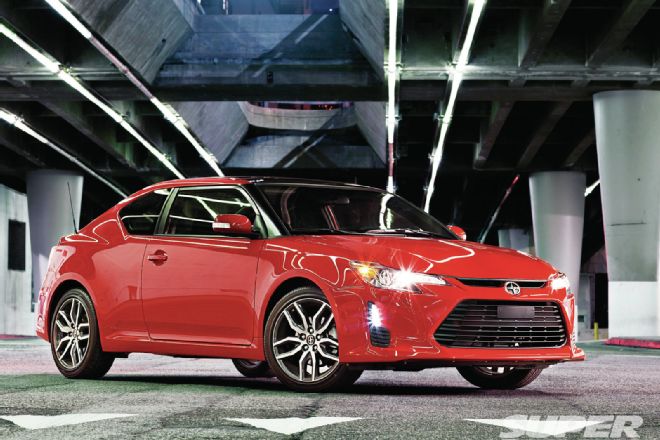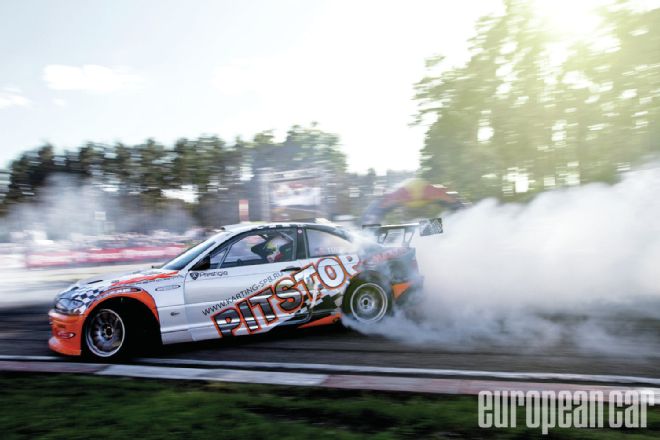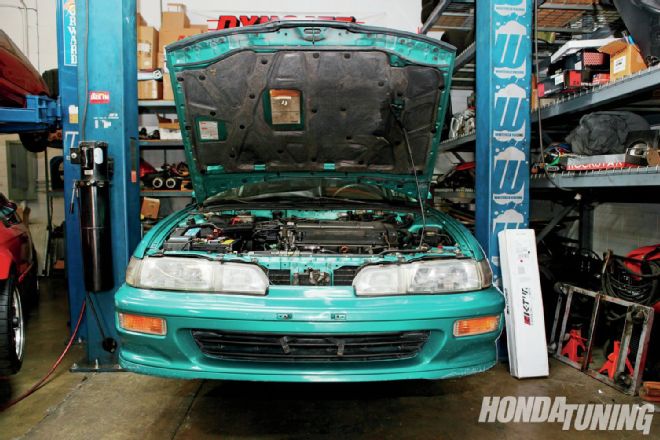Most of us start in a very early age to take on a hobbyist liking to differentobjects and characters, and desires. Our company is presented something new and fresh almost constantly throughout our everyday lives and much of the things we latch onto are temporary. Considering the variety of distractions within our busy schedules, stimulation from a multitude of sources, and influences from every angle, it’s often difficult to choose a solid path. Many often proceed, knowing the likelihood of failure in pursuing the completion of a project. I admit, I’m guilty. I can be impatient; it occurs. While many of us have the luxury of jumping ship and moving on the next good thing we’re thrown, others commit and roll with the punches no matter what degree of pain is inflicted. This Civic coupe was created in part because Ivan Rodriguez said no towards the new train set. He explained no to Stretch Armstrong, and he definitely swatted away the monster truck made available torelying on Hot Wheels and other fast four-wheel machines as time went on, Ivan knew functional aero and flamboyant color combos of Porsche’s peaked his interest. Not born into a royal family, Ivan makes due with the econoboxes we love a great deal. The 9-to-5 grind with a sheetmetal fabrication shop and the immense influence and assistance of his olderJuan and brother, allowed this car’s four-year build time and energy to bring this business to the local tracks and streets of Modesto, CA.
Ivan, like many West Coasters, was in contact with great builds and had the opportunity of a lot of support locally, from shops to meets to friends acquired along those paths. It keeps one motivated and keen to stepping correctly. That is exactly the formula that created this track-inspired EJ1 on the neck-breaking flare it so gracefully uses and wears. Ivan admits that younger enthusiasts not inside the know laugh and point, and disgracefully label the vented Chargespeed fenders as flea market finds. If these naysayers only knew what he had brought it from from what you see today, they would likely be jocking the initial teal body and 17-inch chrome wheels . . . but what are you going to do. Ivan followed an aesthetic he knew he loved, not what anyone else wanted. He obtained the car from the trade; his mainly stock Integra DA was offered up in support of the poorly modified Civic coupe. Yes, the car had debatable styling and an engine stuck in limp mode (limiting to 3,000 rpm and 55-mph top speeds), but what it did offer is normally overlooked from the typical Honda tuner, a straight OEM body. Having a game plan already brewing, his vision of the final result was vivid.
1993 honda civic coupe EJ1 skunk2 intake manifold 13
1993 honda civic coupe EJ1 nardi classic steering wheel 09
1993 honda civic coupe EJ1 theshedbuilt 14
An automobile that could provide the ability to get from point A to point B was the real key feature he kept in mind. This car needed to be everything he imagined, while firing up everyday to stack the cheese required to outfit the vehicle properly. Ivan knew that the car was old enough to purchase cigarettes. He satisfied the craving by stuffing some Energy Suspension bushings into both ends of control arms. The chassis is further refreshed by adding Skunk2 Pro-C coilovers, front strut bar, and Cusco rear upper. To combat the typical trait most front-wheel-drive Hondas have, the turn in and rearend rotation was increased with an ASR rear sway bar and endlinks. What really holds all this madness to the tarmac are the staggered bright red Volk TE37’s. The brilliant wheels contrast the ever-clean earth tone provided by BMW; Space Gray metallic covers the out and inside. This must be the calling card for the Nsidius car crew that Ivan belongs to; it makes sense suit to Jorge Sandoval’s hatchback which we featured in February, Spoon Twin Block calipers sitting behind Volk’s in rare colorways. A greatis definitely the main contributing factor in providing a reliable and healthy heart for the soon-to-be-abused track beast. Ivan along with his girlfriend were on their back from the food store and traveling through a sketchy part of town. Downshifting to your stop sign at a corner full of harassing thugs, Ivan’s transmission had found the appropriate burial grounds for itself and let go harder than Leonardo DiCaprio in Titanic. Without much hesitation he found reverse and utilized its synchro-less beauty to trek the 30 minutes home. Ivan had enough of the drag-built 85mm LS/VTEC and let that minor up in horsepower be a valuable lesson for all practical purposes. Understanding that Honda factory knew best was crucial, by now he desired a motor that could safely spin back and forth from track events and returning to work the following morning. A GSR long-block mated to your ’98 Integra Type R transmission designed for a setup that was greater than usable and placed a stop to any possible future gangster altercations. That’s right boys and girls, nothing too fancy here. The inner workings, as many of yourself know, are only right inside these factory VTECs; they merely work. Using the minor breathing additives, including the Skunk2 Alpha intake manifold and throttle body and the excavation of gases handled by the Mugen header, the motor sings properly from theIf you’re the type of person who truly goes out there and enjoys a spirited drive, you need to understand how key a quality and well-fitting bucket seat is always to focusing on the value of steering management. Buddy Club super low rails sandwich the proven and gorgeous Status Ring buckets while being wrapped up in the ever familiar Takata harnesses. As soon as the speeds and limits of the car are being tested, Julian at Top1 stepped in to provide the splitter and fabrication of the wide heightened and mounted Buddy Club rear wing. The brake cooling is also supplied by Top1. The ducts fit perfectly into the Chargespeed front lip, wait, did you observe that splitter! ? The complete functional aesthetic is brought together nicely with classic Japanese club racer styling. For some reason, as long as the car is well rounded in this fashion, I never tire of your safety tape on glass and tire stenciling of true JGTC style. I think we can easily all agree, Ivan was able to bring this once half running and seemingly hopeless car back around into a very well put together and multifunctional car.
There aren’t many future plans for this car, other than a J’s Racing hood and a never ending execution of wheel whoring. Ivan has recently become a father and, as we discussed earlier, priorities shift and new experiences are presented. However, there are no talks of this new life stopping his tuning. In fact, it can be quite the opposite. This car is now going to become his son’s, which will allow Ivan to move on to another project. We look ahead to seeing the next build.
